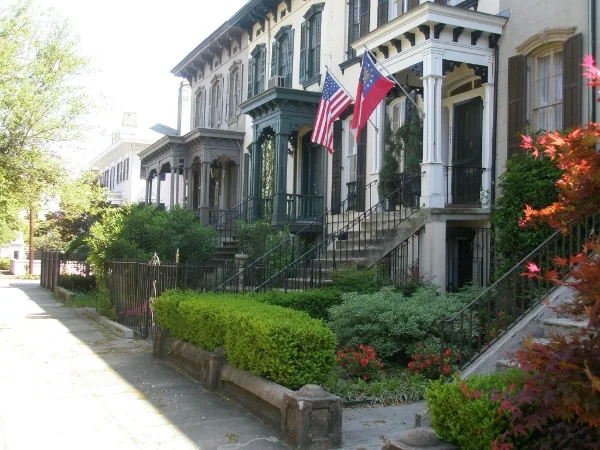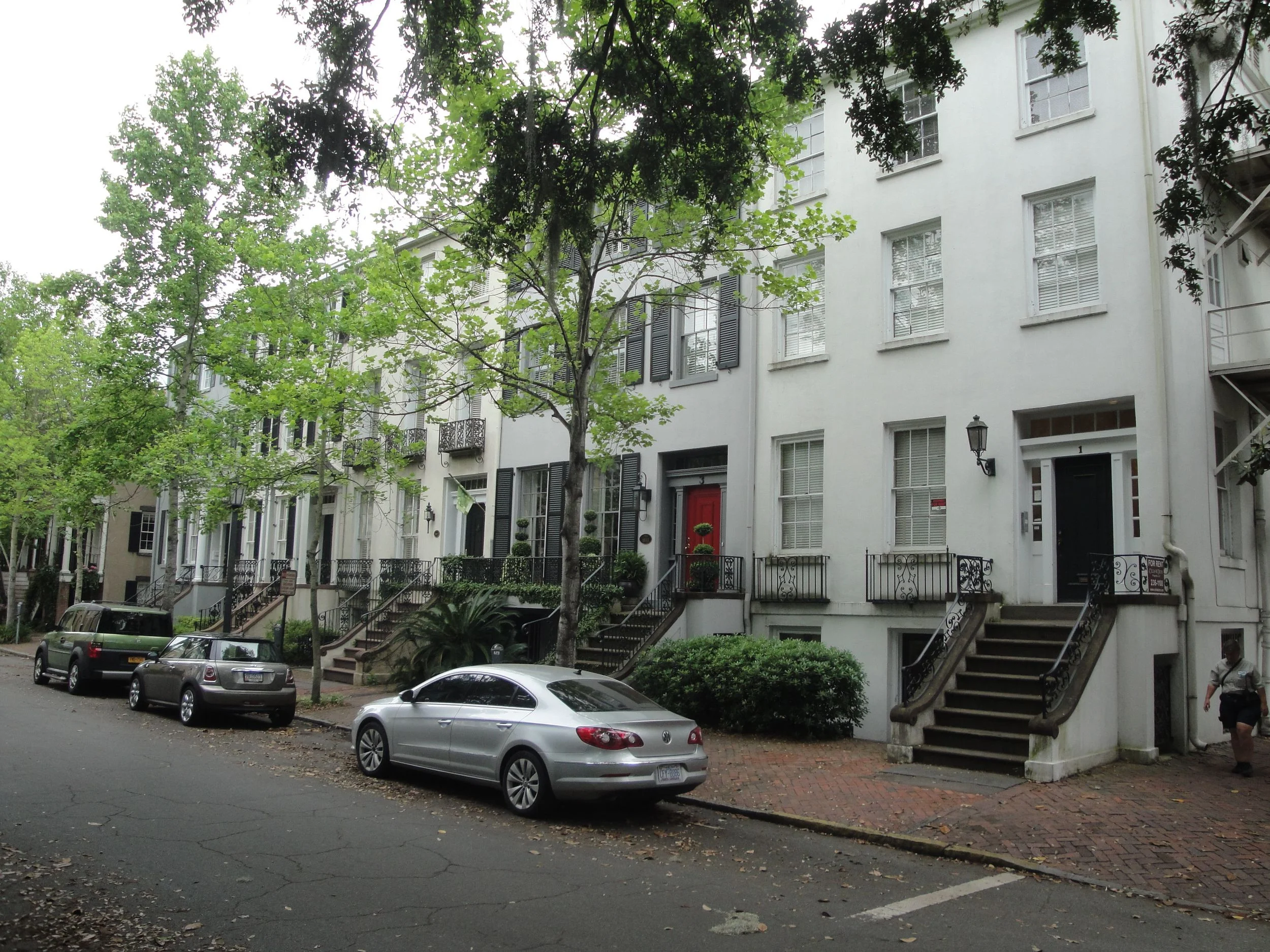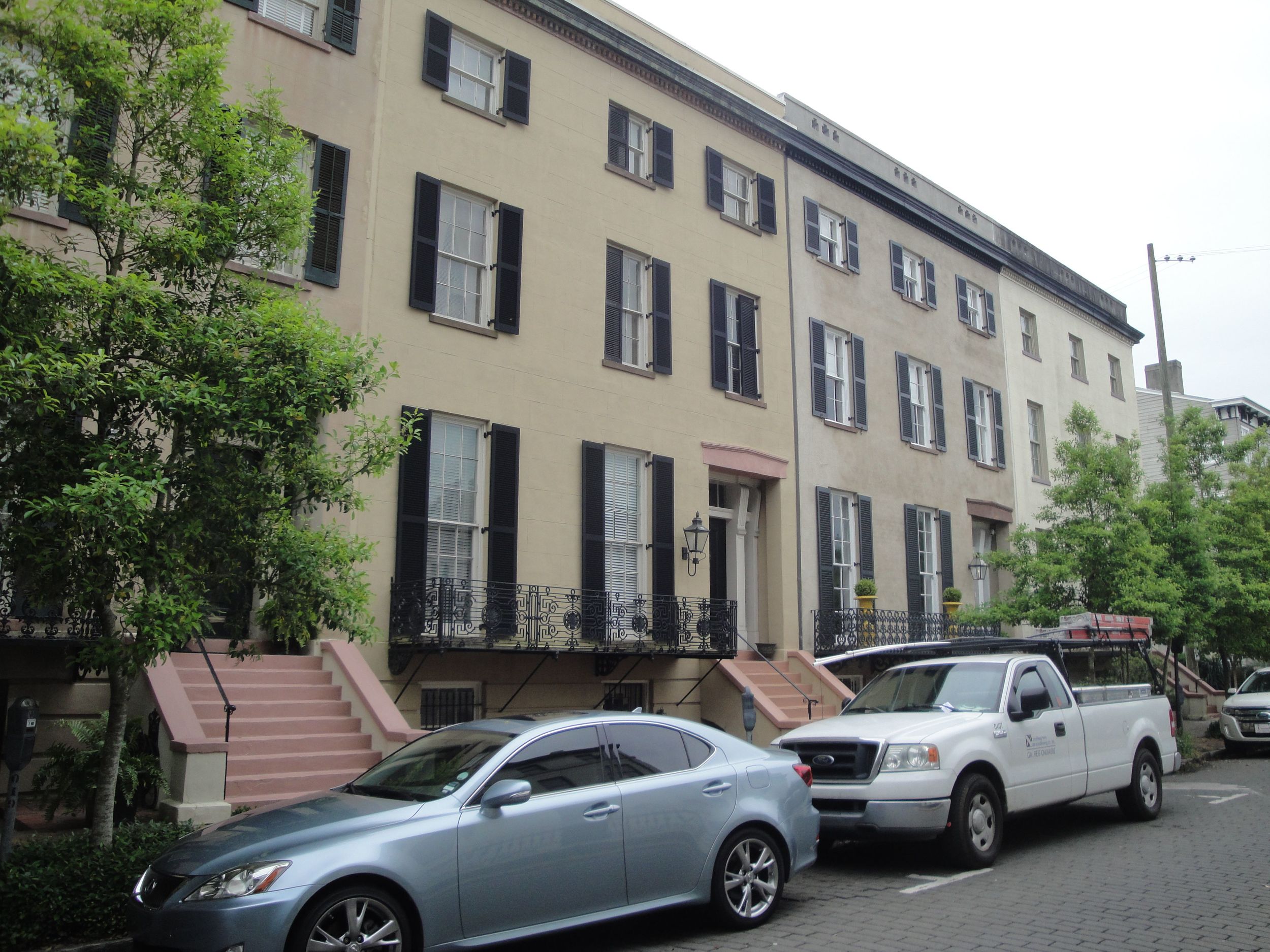A commonly held belief in modern America is that "different is good." Variety and diversity trump all, since to have less would just be boring. And, I get the sentiment. When it comes to my eating habits and my entertainment, I crave variety. If I were forced to eat only one cuisine, and eat it every meal of every day, it would likely be very unsatisfying to me. A fair part of that is due to the paradox of choice, as Barry Schwartz described in his 2004 book. I know about all of the choices that are out there. Thus, if limited to a few, it would likely lead to personal unhappiness. The paradox is that when people only have a few choices to begin with, they often are happier with their selections.
I think about this when I walk around Savannah looking at buildings.
There's simply no question that this is a beautiful city, and the beauty is due to a combination of the landscape, the public spaces and the architecture. Nearly all who visit here are immediately charmed. 12 million people a year don't come here because they crave hot, humid days fighting off the gnats. They love to stroll and enjoy the beauty of what humans have created out of the swamp.
But there's no question that a great deal of that beauty is due more to uniformity than variety. The squares and the Oglethorpe Plan are very regular. Buildings are mostly built within a fairly narrow range of architectural styles. And the best streets have simple, regular plantings of live oaks that overhang the pavement and grace us with their presence.
It's impossible to come here and not think: there's great virtue in regularity.
In the design professions, it's been common wisdom for a long time that variety is better and that cities should strive for difference rather than commonality. After all, this is a very individualistic society, and our architecture should embrace that spirit of difference. Many cities have design guidelines for residential buildings that read like this (names have been withheld to protect the innocent):
A separation by at least 3 lots on either side and across the street by 2 lots in each direction is required for houses with the same or very similar design when viewed from the street.
Minimum variations in house designs shall be created by providing a minimum of two items from the two lists below, or by another methods as approved by the SDARB with a similar degree of variation.
Change in the basic roof by a change of the roof type, the roof form through the addition of dormers and gables, and/or reorientation of the roof spine from parallel to perpendicular to the street.
Addition or relocation of significant bump outs to the front or side of the house that alter the perceived massing of the house such as, two story bay windows, one story sun rooms, corner towers, balconies or other approved features.
Addition or alteration of a significant new detailing package with altered accent color to include any three items such as, trims, shutters, style and color of a front door or garage door.
Or this:
Diversity of architectural styles is encouraged.
A new building should be different in style from buildings on nearby and abutting properties.
A design that creates individual character while also maintaing compatibility with the character of the neighborhood, is encouraged.
A design that incorporates innovation and the use of skilled workmanship is encouraged.
So here's the problem: those sorts of design guidelines will never create places like Savannah. Let's look at just a few photos from around the city.
Here are three houses in the Victorian District. All three are identical, with only some variety in color. For many design guidelines, this would not be allowed:
Some rowhouses that lack variety in roof line, windows, or much else:
Many of the civic buildings on Trust lots have a very similar vocabulary:
This is not at all to say that there isn't variety in Savannah. Far from it. It's just that it happens within a narrower vocabulary, and generally in the details and private spaces. We can write books about why that is (and some have), but the reality and people's reaction to that reality is what interests me most.
An obvious fact is that most American cities simply don't have the kind of visual consistency that our oldest cities have: Savannah, Charleston, St. Augustine, Boston, Alexandria, etc. It's a big reason why we are so taken by cities are foreign countries that do have a common visual language. In the US, with the exception of those historic cities, the only places we see that have consistency are in fact theme parks and movie sets. So, we don't know often how to react to those places, or to any new place that's built with a strict set of parameters. That's the root of comments that equate new towns as "Disney-like" or "fake." Most of us have a framework that perceives similarity as strange. It's a shame, since the very best places always have more uniformity than diversity in appearance.
As has been said, no one goes to Paris and says, "wow, everything looks the same. How awful." The quality of what is being designed and built influences our view of what is repetitive. When it's a typical suburban subdivision we call it cookie-cutter. When it's a French boulevard, we enjoy the cookies on the balcony. Or macarons.
A street full of buildings of all different styles can most definitely be good. Sometimes very good. But the best streets, the most beautiful streets, are quite simple and uniform. Uniformity can lead to horrendous buildings and streets as well, so there is a trap and a downside to advocating for it. The skills of the designer and the builders matter tremendously. But regardless, look to any place that's at the top of the list for beautiful streets or neighborhoods, and you'll quickly see that variety is not a key element.
It might indeed be the spice of life, but too much variety more often leads to indigestion.
If you got value from this post, please consider the following:
- Sign up for my email list
- Like The Messy City Facebook Page
- Follow me on Twitter
- Invite or refer me to come speak
- Check out my urban design services page
- Tell a friend or colleague about this site





